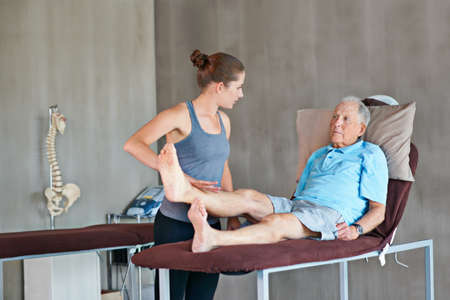1. Overlooking Individual Needs and Preferences
One of the most common mistakes when modifying homes for seniors is using a one-size-fits-all approach. Every senior has unique needs, health conditions, mobility levels, and personal preferences that should be considered before making any changes. Ignoring these differences can lead to costly modifications that do not actually improve safety or quality of life.
Why Personalization Matters
Personalizing home modifications ensures that each adjustment truly benefits the person living there. For example, a ramp might help someone who uses a wheelchair but may not be necessary for a senior who only needs support with balance. Some people might benefit more from brighter lighting, while others may need grab bars in specific locations based on their daily routines.
Key Factors to Consider
| Factor | Why It Matters | Examples of Adaptation |
|---|---|---|
| Health Conditions | Certain medical issues require special features | Wide doorways for wheelchairs, non-slip surfaces for arthritis sufferers |
| Mobility Level | Seniors with different mobility levels need different types of support | Ramps vs. stair lifts, height-adjustable counters for those who use walkers or chairs |
| Lifestyle Preferences | Home modifications should respect how a person lives and what they enjoy doing | Accessible gardens for those who love gardening, easy-reach shelving for avid cooks |
Practical Tips for Personalizing Home Modifications
- Ask Questions: Talk directly with the senior about what activities are important to them and where they feel challenged at home.
- Involve Professionals: Occupational therapists and aging-in-place specialists can provide personalized recommendations based on assessments.
- Avoid Assumptions: Just because something works for one person doesn’t mean it’s right for another. Always tailor solutions to individual circumstances.
- Pilot Changes: Start with temporary solutions like removable grab bars or portable ramps before committing to permanent alterations.
By focusing on individual needs and preferences, you can make sure that every home modification truly makes daily life easier and safer for seniors.
2. Ignoring Professional Input
One of the most common mistakes people make when modifying homes for seniors is not seeking advice from professionals. While it might seem simple to add grab bars or ramps, the reality is that every senior’s needs are different, and not all home modifications are created equal. Consulting with experts such as occupational therapists (OTs), physical therapists (PTs), and certified aging-in-place specialists (CAPS) can make a huge difference in safety, comfort, and long-term usability.
Why Professional Input Matters
OTs and PTs have special training to assess how a person moves and functions in their daily life. They look at everything from mobility issues to vision challenges, making sure changes in the home actually fit the individual’s needs. CAPS understand both aging and construction, so they know how to create accessible spaces that also meet local building codes.
Benefits of Consulting Professionals
| Professional | Main Focus | How They Help |
|---|---|---|
| Occupational Therapist (OT) | Daily activities & independence | Recommends modifications for safety and ease of use, like bathroom setups or kitchen layouts. |
| Physical Therapist (PT) | Mobility & movement | Suggests changes that support walking aids or prevent falls, such as non-slip flooring or handrails. |
| Certified Aging-in-Place Specialist (CAPS) | Aging-friendly design & construction | Ensures renovations meet both accessibility standards and local building codes. |
Risks of Skipping Expert Advice
- Unsafe Modifications: Installing grab bars incorrectly or using the wrong type of flooring can actually increase fall risk instead of reducing it.
- Poor Functionality: Without proper planning, modifications may not work well together—like a ramp that’s too steep or a shower seat that isn’t stable.
- Code Violations: Making changes without understanding local building codes can lead to fines or the need for expensive do-overs.
Tip: Always start your project by reaching out to local professionals who specialize in aging-in-place solutions. Many offer home assessments and can spot problems you might miss.
Taking time to consult with OTs, PTs, or CAPS ensures your loved one’s home is truly safe, comfortable, and ready for their needs today and in the future.
![]()
3. Focusing Only on Accessibility, Not Usability
When it comes to home modifications for seniors, many people think simply adding grab bars or ramps is enough. While these features are important for accessibility, they dont always make a space truly usable and comfortable. Its important to remember that usability means more than just being able to enter a room—it’s about making daily life easier and safer.
Why Usability Matters
A house can be technically accessible but still challenging for seniors if usability isnt considered. For example, a grab bar helps with balance in the bathroom, but if the lighting is poor or the faucet handles are hard to turn, the space remains difficult to use. Good design should support both independence and comfort.
Key Factors Beyond Accessibility
| Element | Accessibility | Usability |
|---|---|---|
| Grab Bars | Easy to hold when standing up or sitting down | Placed where naturally needed (near toilet and shower entry) |
| Lighting | Sufficient brightness to see obstacles | No glare, easy-to-reach switches, motion sensors for hands-free use |
| Surface Textures | Non-slip flooring reduces fall risk | Comfortable underfoot and easy to clean; clear transition between rooms for those with vision issues |
| Reach Ranges | Shelves and controls at wheelchair height | Frequently used items placed within easy reach—no stretching or bending required |
Tips for Improving Usability at Home
- Add brighter LED lights in hallways and near entrances; consider nightlights for bathrooms.
- Choose lever-style door handles and faucet controls, which are easier on arthritic hands than knobs.
- Arrange kitchen essentials on lower shelves or pull-out drawers so nothing requires reaching overhead.
- Select contrasting colors for walls and floors to help seniors with poor eyesight distinguish boundaries.
- Make sure furniture is stable and at the right height for sitting down and getting up easily.
By focusing on both accessibility and usability, you create a home that not only allows seniors to move around safely but also supports their comfort and independence every day.
4. Choosing Inappropriate Materials or Products
One of the most common mistakes in home modifications for seniors is picking the wrong materials or products. While some choices may look stylish, they can actually create hazards or make daily life harder for older adults. Here are some issues to watch out for and how to avoid them:
Common Material Mistakes
| Problem | Why Its a Risk | Better Choice |
|---|---|---|
| Slippery Tiles in Bathrooms or Kitchens | These increase the risk of falls, especially when wet. | Use slip-resistant tiles, textured vinyl, or rubber flooring. |
| Thick Carpeting or High Thresholds | Makes it difficult for people with walkers or wheelchairs to move around. | Choose low-pile carpet or smooth transitions between rooms. |
| Low-Contrast Color Schemes | Seniors with vision changes may have trouble distinguishing steps, walls, or furniture. | Use contrasting colors for floors, walls, and important features like handrails or door frames. |
| Improper Step Heights on Stairs or Entryways | Inconsistent steps can cause trips and falls. | Ensure all steps are uniform and within recommended height (usually 7 inches high). |
What to Look For When Shopping
- Non-slip surfaces: Always check for slip ratings on tiles or flooring. Look for products labeled as “slip resistant.”
- Easy-to-grip hardware: Choose lever-style handles instead of round knobs for doors and faucets—they’re easier on arthritic hands.
- No sharp edges: Rounded countertop corners and padded furniture edges help prevent injuries from bumps or falls.
- User-friendly lighting: Install bright, even lighting with accessible switches. Consider motion-sensor lights in hallways and bathrooms.
Tips to Avoid These Pitfalls
- Always test materials in person if possible—what looks safe online might feel very different underfoot.
- If you’re unsure about a product, ask store staff or a contractor who has experience with senior-friendly remodeling.
- Include your loved one in decisions; what works best will depend on their needs and preferences.
- If you’re doing a big renovation, consider hiring an occupational therapist to review your plans—they can spot risks before installation.
5. Underestimating Future Needs
One of the most common mistakes families make when modifying a home for an older adult is focusing only on current challenges, without considering how needs might change over time. While it’s natural to address immediate concerns—like installing grab bars or removing loose rugs—it’s important to think long-term. Seniors’ mobility, vision, and strength can change, sometimes quickly. Planning ahead can save time, money, and stress down the road.
Why Looking Ahead Matters
If you only solve today’s problems, you may end up doing repeat work or costly upgrades later. For example, replacing doorknobs with lever handles might be enough now, but what if wheelchair access becomes necessary? Thinking proactively means making choices that can adapt as needs evolve.
Short-Term vs. Long-Term Solutions
| Short-Term Fixes | Long-Term Solutions |
|---|---|
| Adds a shower chair for stability | Installs a walk-in shower with a built-in bench and handheld showerhead |
| Removes throw rugs to prevent tripping | Replaces flooring with non-slip surfaces throughout the house |
| Puts in temporary ramps at entrances | Builds permanent ramps with proper handrails and weatherproofing |
| Places brighter bulbs in lamps | Adds adjustable, layered lighting for changing vision needs |
Tips for Flexible, Future-Proof Home Modifications
- Choose adaptable products: Look for grab bars that double as towel racks or shelves, or modular ramps that can be extended.
- Plan for accessibility: Widen doorways and hallways early—even if not needed right away—to accommodate walkers or wheelchairs later.
- Create open spaces: Rearranging furniture now can allow for easier movement as needs change in the future.
- Consult professionals: Occupational therapists and Certified Aging-in-Place Specialists (CAPS) can help you anticipate future challenges.
- Think about technology: Consider smart home devices that can be updated as tech advances or needs shift.
The Bottom Line: Plan Beyond Today
The best home modifications are those that keep the future in mind. By anticipating how needs might change—not just focusing on current issues—you’ll create a safer, more comfortable environment that supports independence for years to come.


